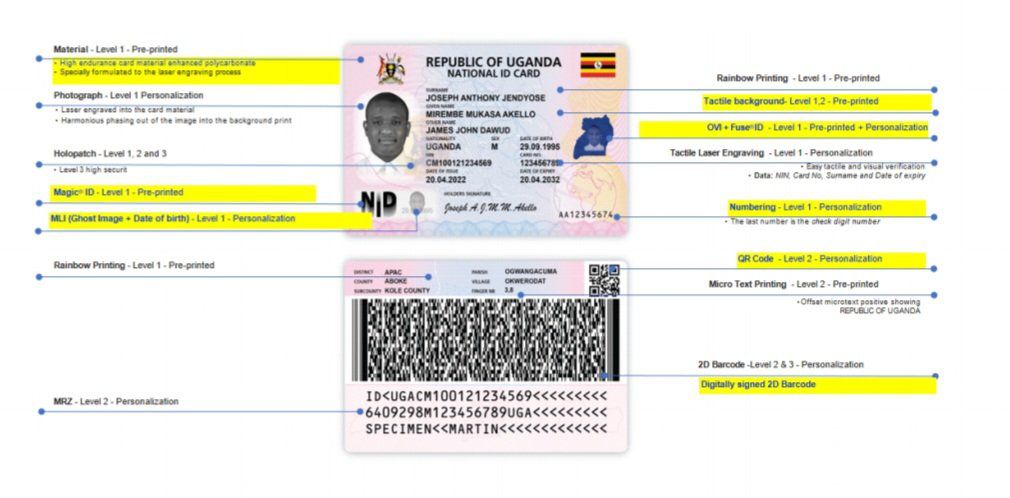The National Identification and Registration Authority (NIRA) has officially unveiled Uganda’s upgraded National ID cards, showcasing cutting-edge features designed to tighten security, enable seamless digital services, and future-proof citizen identity verification.
These new-generation IDs are a major leap in technology and functionality, showing the country’s growing digital needs and the government’s commitment to secure public service delivery.
Biometrics:
According to NIRA Executive Director Rosemary Kisembo, the cards will include biometric data such as fingerprints and iris scans — offering a highly secure method of authenticating identity. This biometric layer aims to reduce fraud and bolster trust in government-issued credentials.
Laser-Engraved Visuals and MRZ Technology
The cards will feature laser engraving technology, embedding multiple images within the card that appear when viewed from different angles — a feature borrowed from advanced international ID systems. This visual complexity makes forgery far more difficult.
They also incorporate a Machine Readable Zone (MRZ) — similar to those used in passports — which allows for quick, reliable data reading by electronic scanners. Alongside this is a 2D barcode capable of storing encrypted data such as URLs, text, or identity credentials, which can be accessed using smartphones or specialized scanning devices.
Built for the Digital Era
Kisembo highlighted that the upgraded IDs are designed with digital integration in mind. They will support both online and offline verification, digital signatures, and secure credential access. The cards are also expected to be compatible with:
- eGovernment platforms
- Mobile ID systems
- Mobile and tablet devices
This means Ugandans will soon be able to use their ID cards to access a wide range of public services more efficiently and securely — whether they’re online or in-person.
Nationwide Rollout with 5,500 Biometric Kits
To support the enrolment process, NIRA will deploy 5,500 biometric registration kits across Uganda — with 5,300 for immediate field use and 200 on standby to ensure smooth operations. This strategic distribution aims to prevent delays and increase accessibility as the country transitions to the new identity system.














